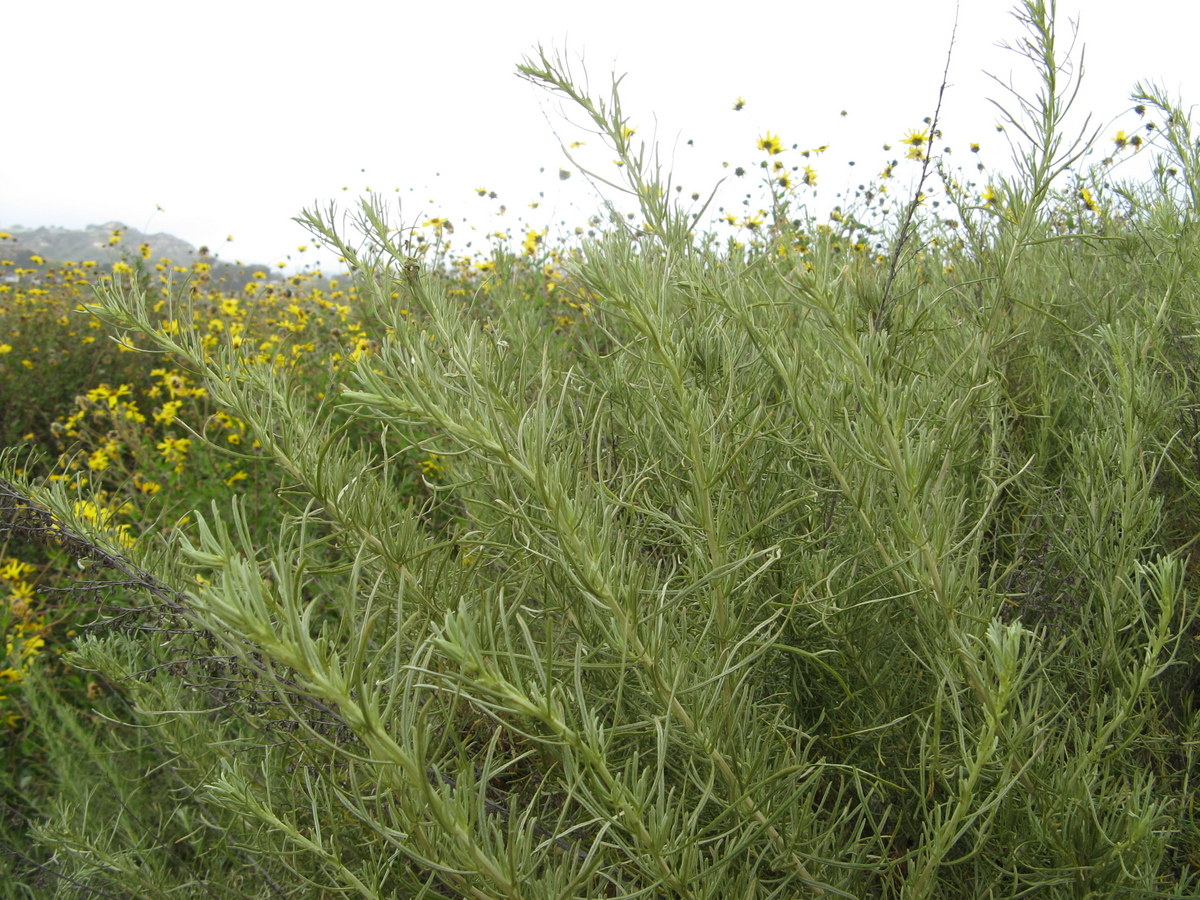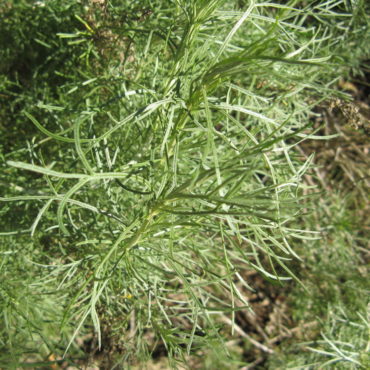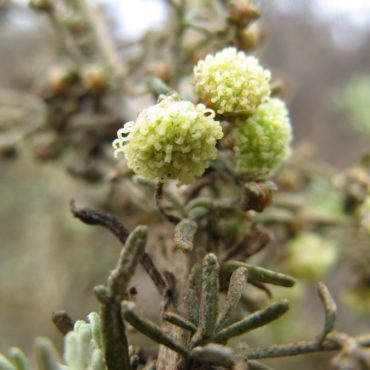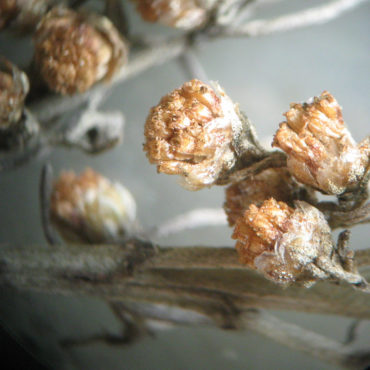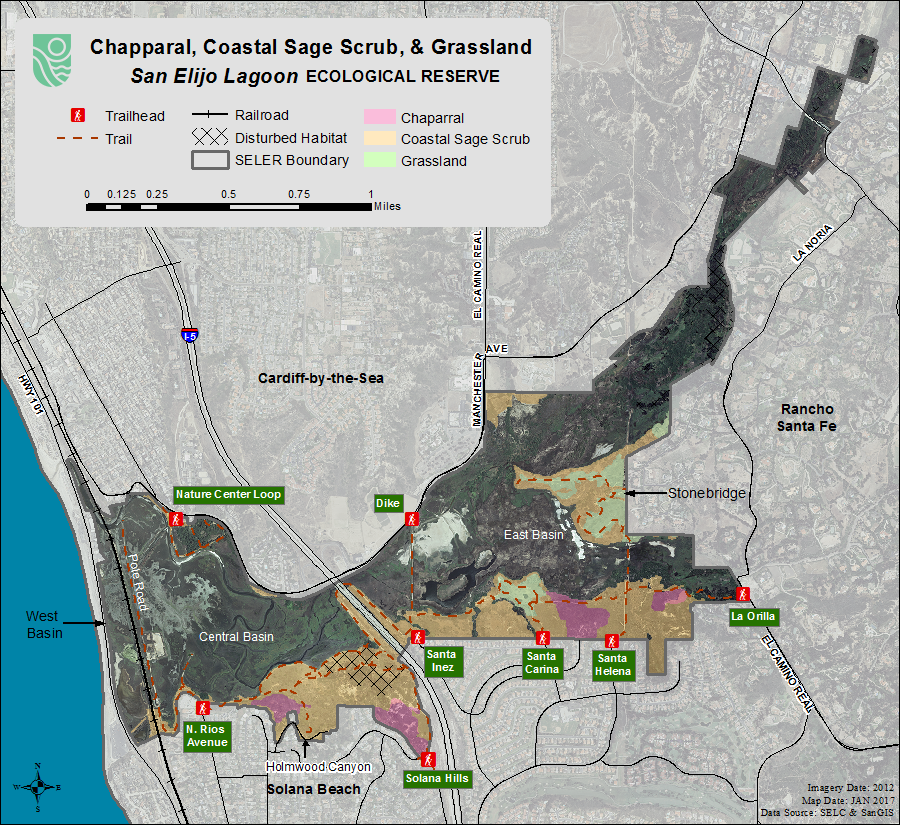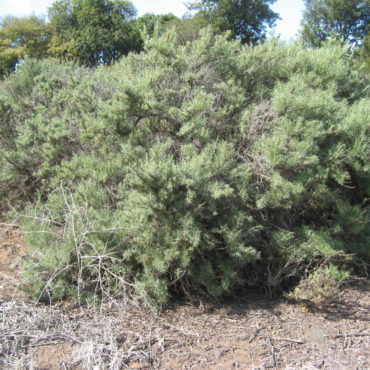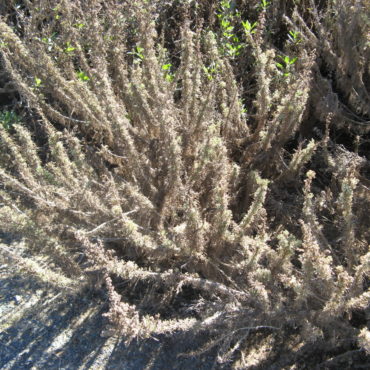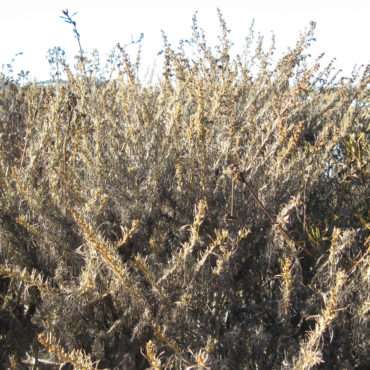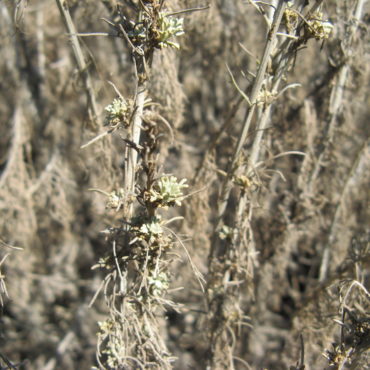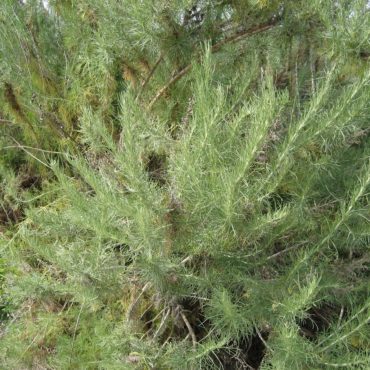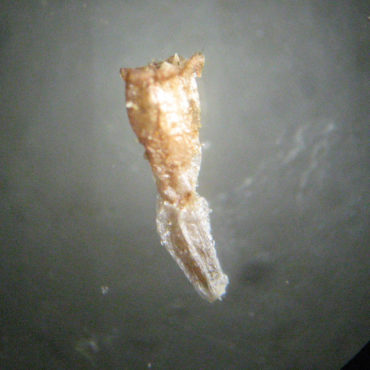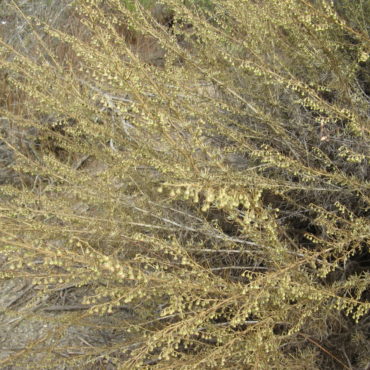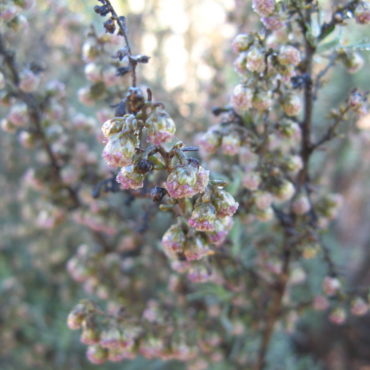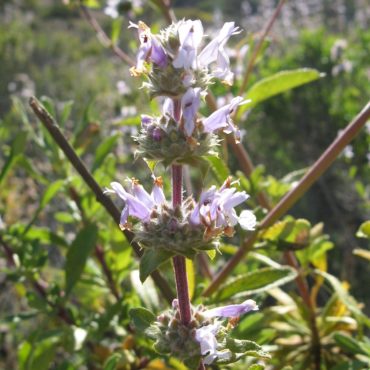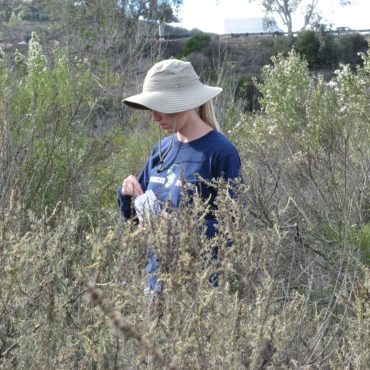California sagebrush, or coastal sagebrush (Artemisia californica), like many plants in the coastal sage scrub, has adapted to our summer drought by having two growth forms. In the winter and spring, when seasonal water is available, the gray-green leaves are long, tender and feathery. Plants are lush, and grow rapidly. During the hot dry summer months, spring leaves wilt and are replaced by small, tough leaves, Growth slows or stops, transpiration is reduced and the plant may look dead or dying. Under prolonged drought, leaves may be shed entirely.
The pungent aroma of sage brush contributes to the characteristic fragrance of coastal scrub sage. When hunting, Kumeyaay would rub themselves with sagebrush to disguise their human odor.

